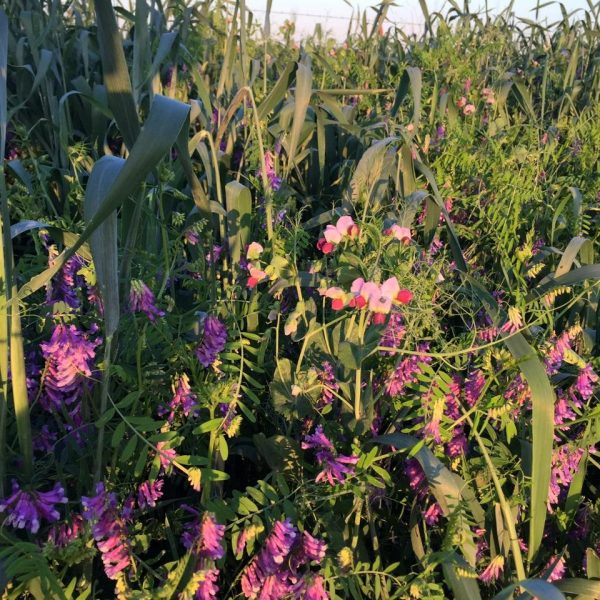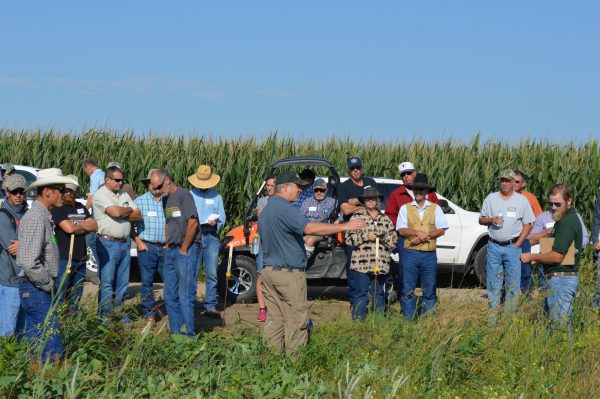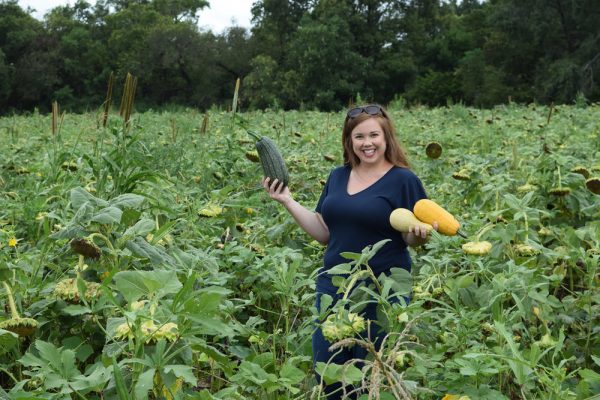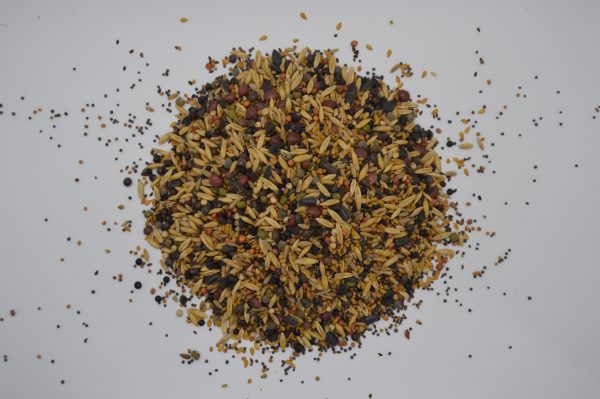Company’s focus on soil health education leads to business success
Regenerative agriculture is a fast-growing trend in agriculture in the U.S. and worldwide. That growth is mirrored in the success of Green Cover Seed, a Bladen, Nebraska company selling seeds for cover crops—an essential tool of regenerative agriculture.
1000 to 1 million acres of cover crops
Green Cover Seed was founded in 2009 by brothers Brian and Keith Berns. Their timing starting the business was “really good,” according to Keith. In the late 2000s, the U.S. Department of Agriculture’s National Resource Conservation Service began focusing on the importance of soil health, including the use of cover crops. Around that time, Keith and Brian started growing cover crops on their 2000-acre farm in south central Nebraska.
“We started experimenting with cover crops and had some really good successes that first year, particularly looking at the moisture use efficiency of diverse cover crop mixes,” Keith says.

Hairy vetch cover crops
The positive results they saw led them to launch Green Cover Seed in 2009. They saw a need for selling diverse mixes of cover crops, which were hard to find.
That year they sold seed to farmers within their network, enough to plant about 1000 acres. The response was positive. “People were excited about it,” Keith says.
Fast forward to 2021, and Green Cover Seed now sells enough cover crop seeds to cover a million acres. They started with no employees and now have 50, as well as seed production facilities in Nebraska, and one in Kansas, which recently opened. They sell cover crop seed mixes to customers in all 50 states and most of the Canadian provinces.
Keith estimates that adoption of cover crops in the U.S. is growing by 5-6% per year, and 20-25 million acres of cover crops are now grown.
Multiple benefits
Cover crops are gaining ground because they provide multiple benefits. They cover and hold soil in place to reduce erosion, a major problem in the Midwest corn belt. They suppress weeds and reduce the need for herbicides. Legume cover crops produce nitrogen, reducing the need for synthetic fertilizers—a major benefit with soaring prices of nitrogen fertilizers. Cover crops also provide forage for grazing livestock.
“The benefits will vary depending on the goal that someone wants to achieve,” Keith says. “That’s why we are never comfortable selling a cover crop mix to somebody without asking the question: ‘What are you trying to accomplish?’”
Cover crop benefits are magnified in an organic farming system. “When you don’t have the ‘easy button’ tools of herbicides or synthetic fertilizers, cover crops become an even more important tool,” Keith says.
Green Cover Seed sells 120 different cover crop varieties, which are divided into four categories: legumes, grasses, brassicas like radish and turnips, and broadleaf plants like sunflowers and flax.
“We’ll pick different things from each of those different groups to maximize the benefit of diversity,” Keith says.
The most popular cover crop is cereal rye. It can be planted as late as December and germinates at 34 degrees.
“It will be green all winter long and it just takes off, growing faster than anything else in the spring,” Keith says.

Green Cover Seed co-owner Keith Berns talks to farmers at field day
Oats, hairy vetch (which produces nitrogen), winter peas, clovers, radishes, and turnips are also popular cover crops.
Green Cover Seed sells its mixes to a growing number of organic farmers. The seeds aren’t certified organic but they are non-GMO and not treated, which allows organic farmers to grow them.
There are plans to sell certified organic cover crop seed mixes.
“We’re moving in that direction,” Keith says. “We are working towards having some production acres this coming year on organic hairy vetch and organic winter peas.”
Education as a marketing strategy
Green Cover Seed offers an online, SmartMix tool that allows farmers to create their own cover crop mixes. Farmers enter information about their fields such as where it’s located, the number of acres, and what they plan to plant. SmartMix then helps farmers create a custom cover crop mix that meets their specifications.
“It’s an educational tool in that as people are trying to pick which species they want, they can learn about the species to make the best choices that they can,” Keith says.
SmartMix is an example of Green Cover Seed’s marketing strategy, which is to educate farmers about the value of cover crops in building soil health.
The education focus can be traced to Keith Berns’ background as a teacher for 10 years.
“Having an education background myself, we’ve always considered ourselves a leader in providing soil health education,” he says. “And frankly, that has been our marketing strategy.”
By educating farmers about the principles of soil health and the importance of having the soil covered, they will understand the value of cover crops.
“The only logical conclusion is that at some point you need to have a cover crop within your system. Then cover crops sell themselves,” Keith says.
Green Cover Seed offers conferences and webinars and shares their customers’ experiences and success stories with cover crops.
They also publish and distribute a Soil Health Resources Guide, an 84-page compilation of articles from leaders in the soil health movement such as soil scientist Ray Archuleta, North Dakota farmer Gabe Brown, soil ecologist Christine Jones, and others.
Regenerative agriculture growth, carbon markets
When asked to define regenerative agriculture, Keith says: “It’s the practices that farmers use to implement soil health principles on their own farming operation. As Gabe Brown says, ‘It’s working with mother nature instead of against her.’”
Carbon markets—where farmers are paid to adopt regenerative practices like cover crops as a way to sequester atmospheric carbon and help mitigate climate change—are generating a lot of buzz but Keith is skeptical about them by themselves.
“If farmers are only doing it to get a carbon payment, when that payment runs out, chances that they will continue to do those practices aren’t very high,” he says.
But if farmers see the benefits of regenerative practices—building soil health and increasing their profits—they will view the payments as “gravy on top” and will be committed to them long-term.
Looking at the big picture, Keith would like to see 100 million acres of U.S. farmland grown using soil health/regenerative practices.
“We’re not saying that we’re going to sell cover crops for a hundred million acres because that’s probably not realistic, but we want to be leading the charge and getting the whole country to that point,” he says.

Kansas farmer Jennifer Speer holds squash harvested from her farm’s Milpa garden
Milpa seed mix helps feed people, renews farmers’ mission of producing food
By Ken Roseboro
One of Green Cover Seed’s cover crop mixes benefits not only the soil but people, too. The Milpa Garden Seed mix contains vegetable seeds that farmers grow, harvest, and donate to food banks and other good causes.
The inspiration for the garden seed mixes resulted from the importance of having diverse mixes of cover crop seeds.
“Gabe Brown in North Dakota started throwing vegetable seeds in with cover crops and called it a chaos garden because you just kind of planted everything together,” says Keith Berns.
Keith got the name “Milpa” from the book 1491, which described how early native American tribes grew the “three sisters”—corn, squash, and beans—to improve the soil and grow food. Green Cover Seed went beyond the three sisters and compiled a mix of more than 40 different seeds including cucumbers, pumpkins, watermelon, squash, okra, and leafy greens like collards and mustard.
Farmers plant the mixes and then harvest the vegetables and donate them to food banks, homeless shelters, or other charitable organizations.
Green Cover Seed will give farmers who donate the vegetables an acre of seed for free as part of its First Acre program.
Kansas farmer Ryan Speer and his wife, Jennifer, have planted a Milpa garden for three years. The Speers have harvested tons of produce and given it to the Harvey County, Kansas, Food and Farm Council, Salvation Army, women’s shelters, and employees of the Newton, Kansas hospital where Jennifer works.
“To see the joy that people had, when they haven’t had fresh vegetables for a long time, was so rewarding,” Ryan told Successful Farming. “Seeing how much they appreciated it, knowing we’re doing a good thing, makes the work worthwhile.”
That is another benefit of the Milpa, renewing farmers’ mission to produce food for people, instead of commodities for far-removed markets.
“Farmers have been removed from producing food for people by growing corn for ethanol or soybeans to feed pigs,” Keith says. This program aims to rekindle that mindset and feeling of being a food producer and not just a commodity producer.”
Green Cover Seed plans to expand the First Acre program this year with sponsorship and support from The Nature Conservancy and Syngenta.
“We’re going to be able to significantly increase the amount of free seed that we’re able to get to people,” Keith says.
For more information about the First Acre program go to www.milpagarden.com.
(Additional source: Successful Farming)









